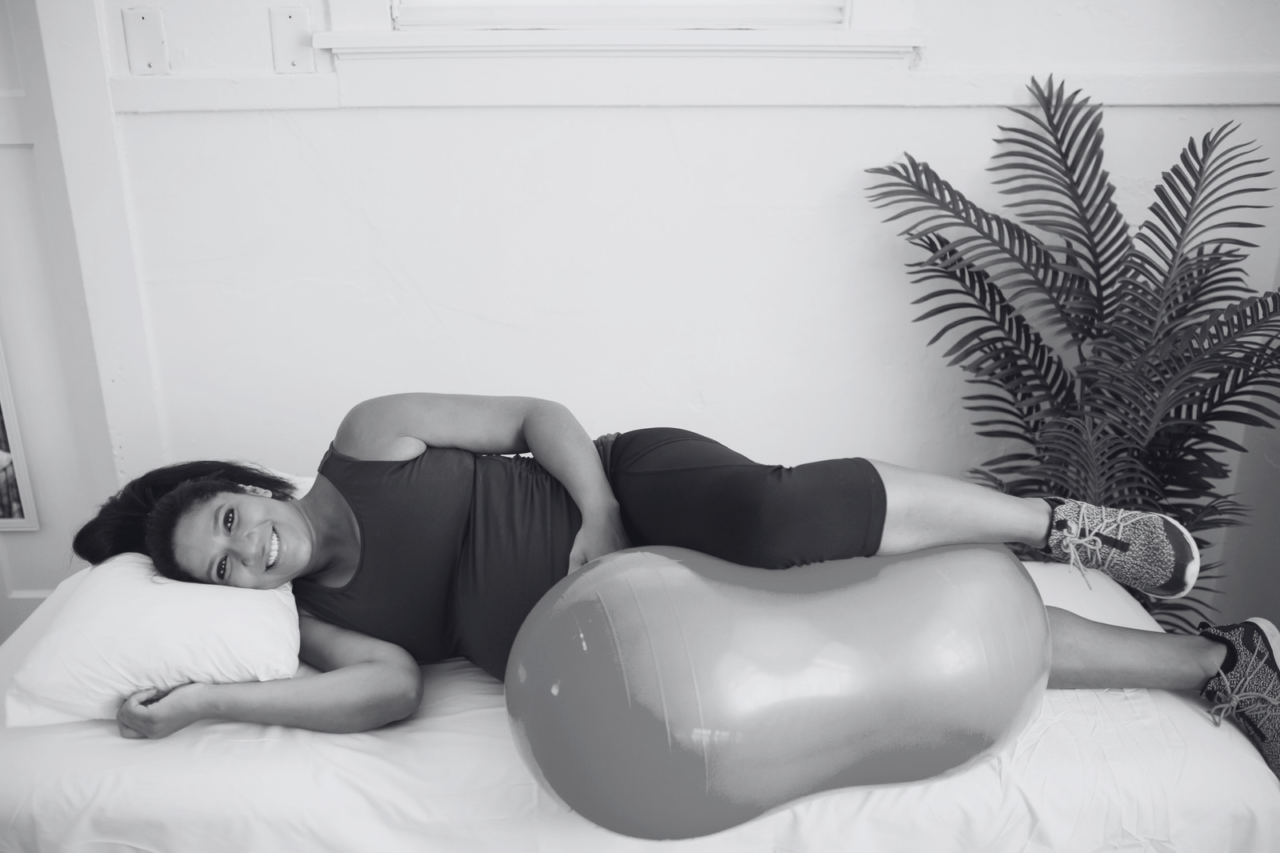Childbirth can feel intimidating. And we often come into labor and delivery with a lot of questions…
How painful will this *actually* be?
Am I going to poop?
How to prevent tearing during birth?
Perineal tearing during childbirth is a common fear—and something we’ve come to believe is an inevitable part of having a baby.
Although we may not be able to completely prevent tearing, there’s plenty we can do to decrease the chance of vaginal tears during childbirth. And I’m here to give you the 4-1-1. Let’s dive in together!
Tearing 101
Degrees of Tearing
Tearing during a vaginal birth is common. In fact, The Royal College of Obstetricians and Gynecologists estimates that as many as 9 in 10 first-time moms will experience some degree of tearing.
(Take a deep breath, mama. Remember, we’re here to talk all about prevention. There *are* things you can do!)
While most tears occur at the perineum–that small space between your vaginal opening and your butthole–tears can also happen inside the vagina and can affect other parts of the vulva.
Tears also vary quite a bit in intensity. First-degree tears are small tears or grazes that only affect the skin. They most often affect the labia, clitoris, and vaginal walls, and they often heal quickly and without any treatment or stitches. While they can certainly be painful, they typically don’t cause any long-term problems.
Second-degree tears are those that actually affect the perineal muscles. They often require stitches—which dissolve over time—to support the healing process. Repair usually happens using a local anesthetic while you’re bonding with your baby shortly after birth. Second-degree tears rarely result in long-term complications.
Third- and fourth-degree tears are the most severe. Also called obstetric anal sphincter injuries (OASIs), these deeper tears affect the muscles that control the anus and often require additional surgical interventions immediately after birth. OASIs happen in 2-6% of vaginal births, and without proper treatment they can result in complications, like urinary or fecal incontinence, later in life.
Factors that May Increase Your Risk of Tearing
Tears aren’t always predictable, but you might be more at risk if:
- It’s your first vaginal birth.
- Your baby is over 9 pounds.
- You push for a long time (greater than 2 hours) or you push quickly.
- Your baby’s shoulders get stuck in the birth canal (also known as shoulder dystocia).
- Your baby is born in an upright (breech) position.
- You have an instrument-assisted birth (like forceps or vacuums).
- You’ve had an episiotomy.
3 Ways to Decrease the Risk of Tearing During a Vaginal Birth
While a tear could happen to anyone during the birthing process, there are some strategies to use before and during birth that can mitigate your risk.
#1 Try perineal massage.
This is an excellent preventative step you can take at home!
Starting at about 34 weeks of pregnancy, you or your partner can do a quick daily massage to help prepare your perineum for the intense stretching that happens during labor and delivery.
To do a perineal massage:
- Lie on your back with your knees bent.
- Let your knees gently fall to the side with pillows underneath them for support.
- Place a finger up to your first knuckle into the vaginal canal. Gently press down toward the anus.
- Slowly make a U-shape inside the bottom half of the vagina, holding for 30-60 seconds at each point. Continue for 1-5 minutes.
Repeat this process daily or every other day to get the max effects. It might take a week or two to feel a decrease in the burning sensation and increase in perineal softening.
(I have a whole blog post on perineal massage. Check it out here!)
Additional Tips for Performing Perineal Massage
Stretching downstairs can feel vulnerable and uncomfortable. Use these tips to make the best of your massage!
- Sit in a warm bath to relax and loosen those muscles.
- Ensure your nails are short and clean to prevent scratches or infections.
- Use lubricants like The Slippery Stuff or organic coconut oil.
- Using a perineal wand can be another great option to reach around your baby bump.
#2 Switch up your birthing position.
Delivering in a flat position, such as lying on your back, can increase your risk of tearing. Birthing in a side lying position, lying on your side holding one knee to your chest, can minimize the risk of perineal tearing. Birthing in a side-lying position is possible with an unmedicated birth or if you have an epidural, so make sure to check with your medical provider about this as an option.
#3 Use a warm compress.
In the middle of crowning, as your baby’s head stretches the perineum, use a warm compress over the perineum to relax those delicate tissues. This can help reduce the severity of tearing. You can also use oil—such as vitamin E, coconut, or olive—or a lubricant to soften the tissues and prevent tearing during childbirth.
Healing From a Tear After Childbirth
Remember, sometimes tears just happen! To take care of your tear, and any stitches you may have, follow these tips.
#1 Keep things clean.
Make sure to clean the affected area with water only at least once a day. Use a perineal spray bottle after using the restroom. Change your pads regularly, and wash your hands before and after using the bathroom.
#2 Avoid constipation.
While regular #2s shouldn’t have a negative effect on healing, constipation could! Avoid postpartum constipation by:
- Going when you need to.
- Drinking plenty of water.
- Increasing dietary fiber with fruits, veggies, and whole grains.
- Using a stool or Squatty Potty to get into prime pooping position.
- Taking your time and breathing deeply.
- Asking your provider about starting stool softeners proactively beginning day one after giving birth.
#3 Manage pain and discomfort.
Pain and soreness for 2-3 weeks is to be expected, especially when walking, sitting, or urinating. Place an ice pack or bag of frozen peas on your perineum for 20 minutes several times a day to decrease pain. Sitz baths, padded donut cushion, and over-the-counter pain medications can also improve discomfort throughout the healing process.
#4 Know when to talk with your provider.
If your tear or stitches become painful or itchy, or if the area doesn’t seem to be healing, contact your provider right away. Other signs of infection include:
- Red, swollen skin.
- Smelly discharge or pus.
- Warmth to the area.
- Fever.
Prevent or manage a tear today.
Another way to prevent a tear–or to more effectively heal a tear that already happened–is to take excellent care of your pelvic floor. The V-Hive Membership can help.
The V-Hive offers online, on-demand, pregnancy-safe workouts for your pelvic floor and core:
- The Pregnancy Series: Strengthen your pelvic floor and core and decrease discomfort with this week-by-week suite of workouts and pelvic floor tips designed especially for pregnant bodies.
- The Childbirth Prep Series: Prepare your pelvic floor and core for birth and build confidence as your due date approaches. (If you’re in your third trimester, your body will love you for this!)
- The Childbirth Recovery Series: Gentle stretching and strengthening routines for your first six weeks of recovery. (Great for vaginal or C-section deliveries.)
- The Postpartum Series: Regain pelvic floor and core strength strength after giving birth and return to your favorite fitness routines without leakage or pain (no matter how long ago it was!).





